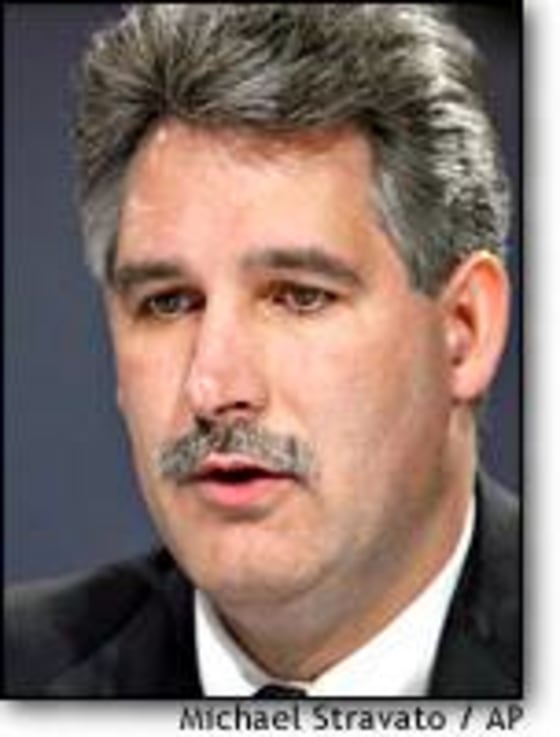A top NASA engineer says future astronauts venturing out on spacewalks may not be able to fix the kind of damage that doomed Columbia, despite accident investigators’ recommendations.
“It is absolutely our intent” to repair damage to the leading edges of the wings, said Steve Poulos, manager of NASA’s shuttle vehicle engineering office. “My uncertainty is what our true capability for repair is going to be. In other words, what level of damage can we ultimately repair.”
Astronauts on the next space shuttle flight, for instance, may not be able to patch a hole as big as the one that brought down Columbia in February, Poulos said Tuesday.
It was the first time that someone so high within NASA expressed uncertainty about the possibility of equipping future shuttle astronauts with the necessary materials and tools to patch potentially deadly holes in spacecraft wings.
“There’s nothing off the table” for developing a patch for the thermal shielding on the leading edges of wings, Poulos said. “If we can make that work, that is what we’re going to go fly. If we cannot make that work, then we have some decision points that we as an agency need to sit down and talk about and decide is that a risk that we’re willing to take.”
Resume launches in 2004?
NASA hopes to resume launches sometime next year. A tentative March or April date has been ruled out for Atlantis, the next shuttle up, and it will be a few more weeks before shuttle officials settle on a new target date.
Poulos said at a return-to-flight seminar at Johnson Space Center that the “paramount” objective is to eliminate or at least minimize the amount of insulating foam and other debris shed from the external fuel tank during liftoff. But later in the afternoon, the deputy manager of NASA’s external tank project, Neil Otte, told reporters it will be impossible to completely prevent foam from coming off, given the current technology.
A chunk of foam the size of a suitcase tore a hole in Columbia’s left wing 82 seconds after liftoff in January, and the gap let in the searing gases of re-entry two weeks later. The spaceship broke apart over Texas on Feb. 1, killing all seven astronauts.
In their final report issued late last month, the Columbia accident investigators urged NASA to not only eliminate flyaway foam and other launch debris, but to toughen the shuttle wings and develop a plan for astronauts to make emergency repairs in case their ship is damaged. They recommended that the repair plan cover “the widest possible range of damage.”
The gash in Columbia’s left wing was an estimated 6 inches to 10 inches. Poulos said he does not know whether astronauts on the next flight — or any successive flight — will be able to patch such a big hole given the difficulty in finding a material that can adhere to the carbon composite panels on the wing edges and withstand the thousands of degrees of re-entry.
Any roughness in the patch could make matters worse by creating more turbulence during re-entry and causing even more heat buildup in the damaged area.
NASA flight director Paul Hill said various concepts are being studied, and “it is not out of the realm of possibility” that one of them will work.
“We have not just accepted that as not repairable,” Hill said. “That is still on the table for us to figure out how to repair — if we can.”
It will be easier for astronauts to patch holes in the thermal silica glass fiber tiles that cover the rest of a shuttle, Poulos said. Spacewalking astronauts will likely use a caulking gun to inject a filler material into those gaps.
NASA plans to use the international space station as a rescue shelter for shuttle astronauts who end up with a damaged ship that cannot be repaired.
